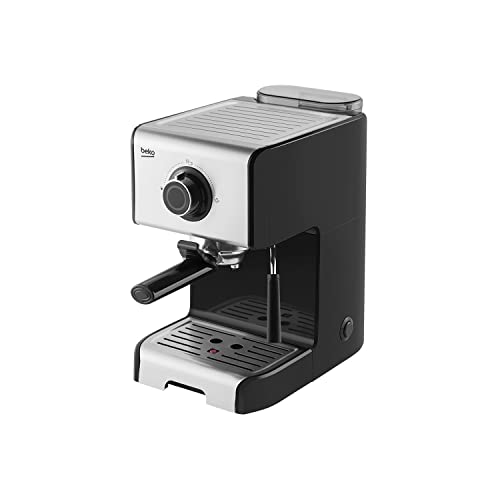How to Make Espresso Machine Coffee
Espresso machines can produce an amazing cup of coffee, however they require more maintenance and setup than a regular coffee maker. It is also necessary to grind and tamp the beans yourself.
The key to making espresso is pressure. What happens in an espresso machine is that the heating vessel heats the water to a perfect temperature, then it forces it out from the spouts into the grounds.
Temperature
Espresso is produced by pushing hot water, under pressure, through finely ground coffee beans. The temperature of the water is essential to the final shot. Temperatures that are too low can result in a lack of flavor compounds. High temperatures produce over extraction and can lead to burnt or bitter tastes.
The ideal temperature for espresso is between 195 and 205degF. This temperature can be achieved using a grouphead that is designed to maintain an even temperature and stability throughout the process of brewing. The E61 is the most well-known group head since it comes with temperature stability, pre-infusion capabilities, and lever control.
It is important to take into account the temperature when you adjust your espresso machine to different roasts or brew ratios. This will impact the extraction yield as well as the crema. The optimal temperature will depend on the specific roast and bean however the general rule is that lighter roasts and higher ratios of brews require higher temperatures than dark roasts and lower ratios of brew. A good thermocouple is crucial to keep the same temperature.
Pressure
During the brewing process espresso machine coffee is pressure-pushed through finely ground and tamped grounds. This triggers chemical reactions that extract flavors oils, flavors, and other soluble components from the beans. The beverage produced is usually richer and more flavorful.
The ideal espresso machine pressure is nine bars of pressure, which is equal to the atmospheric pressure at sea level. espresso coffee machine found in the coffee bean are best extracted at this pressure.
However some espresso machines advertise 15 or 20 bars of pressure. These machines could reach these pressure levels, but they might not maintain them throughout the extraction.
To put that in perspective, one bar of pressure equals 32 pounds per square inch PSI of a car tire. It's also more than four times the amount of pressure that professional cyclists use when filling their bicycle tires. Any serious home barista must to be able to control the pressure of their espresso machine and produce consistent espressos.
Water
The water you use to make espresso is one of the most crucial elements of a great cup coffee. The right water can assist your beans in reaching their full potential, and the wrong water can lead to issues such as blocked pipes or even damage to your expensive espresso machine.
The best option is natural spring water that is high in minerals for optimal espresso extraction. This water will enhance the flavor of your espresso without the chalky mineral traces that come from tap water or bottled water. This is an excellent alternative to distilled or reverse osmosis, which may be too pure and cause problems with flavor.
It is not recommended to use a water filtering system that removes the mineral content of the water you drink. This can lead to flavor and extraction problems. Purchase a water testing kit to determine the average hardness of your local water. This can be used to find a filtration system that will provide the proper water specifications for your espresso machine.
Beans
Most coffee lovers tend to be very involved in the entire process of making espresso. They obsess about a number variables, like temperature, water pressure, and viscosity. If one of these variables is off even slightly the whole shot could taste bad.
The beans used are the most important aspect when it comes to espresso. It is often believed that only certain kinds of beans are suitable for espresso. While certain beans are suitable for specific uses, any roasted coffee bean can be used to make espresso. Espresso beans are roasted longer than regular coffee beans, tipycally over the second crack. This makes them appear darker and makes them more water-soluble.
Medium or dark roast beans are best for espresso as they impart the espresso with richness and a boldness. Light roasted beans can also be used to create great espresso, especially when they are ground for convenience in an espresso maker.

Milk
Espresso and milk are a timeless combination. The combination of espresso and milk is a classic. It does not only increase energy levels, but it also balances the bitterness of the espresso. This is among the best culinary pairings!
If you decide to get an espresso machine that can make latte or cappuccino make sure to take a look at how simple it is to use. A lot of the top espresso machines come with a jug that can be filled with hot or cold milk as well as a steam wand, and a portafilter that allows you to take the shot. Certain models also come with a built-in grinder, tamper and frother.
The steam wand must be purged before making use of it for the first time every day (or after each cup of espresso) to eliminate any condensed water. This process can take about 30 seconds and is essential to ensure that your machine runs smoothly. If you don't purge the system, it could cause a bitter taste and/or a buildup of bacteria which can alter the flavor or aroma of your beverage. It's not difficult to do and should be part of your regular maintenance routine.
